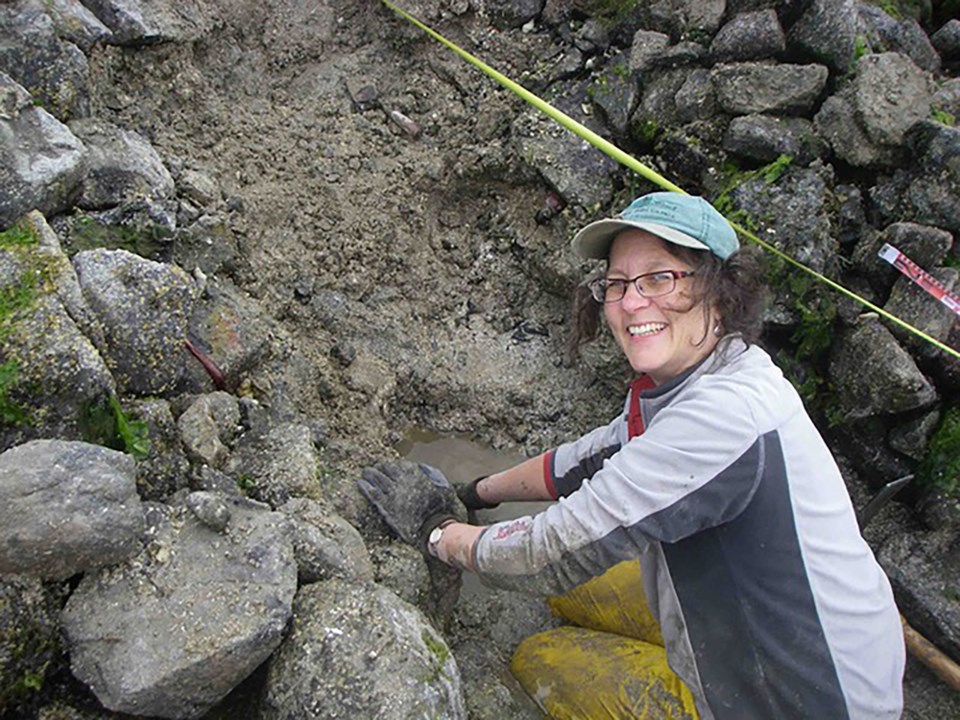qathet region residents can hear about an exciting archaeological project on Xwe’etay/Lasqueti Island, bringing together settler and Indigenous communities to discuss issues related to Indigenous heritage, during a presentation at qathet Museum and Archives later this month.
Dana Lepofsky, a professor in the department of archaeology at Simon Fraser University, said as an archeologist, she has been working her whole career in collaboration with Indigenous communities and their right to protect their archaeological heritage. She has spent a lot of time working in and with Tla’amin Nation, and in Desolation Sound.
Lepofsky lives on Lasqueti Island and said over the years her interactions with its non-Indigenous residents has revealed that advances won’t be made in honouring and respecting Indigenous heritage unless there is a discussion among all players.
“That means all Indigenous players and all settler players as well,” added Lepofsky. “Furthermore, once we have the discussions, I believe that archaeology is the in-road and the way to access discussions about mutual respect, reconciliation, living with your neighbours, that kind of thing.
“This project is based on the idea that if people are brought together around archaeology, we might be able to make those kinds of social changes.”
Lepofsky said that not only is there “cool archaeology” to bring people together on Lasqueti, but the important part of the project is a piece about community policy and planning, dovetailing community engagement with a policy and planning piece.
“It has the potential to make real change moving forward that addresses these complex issues,” added Lepofsky.
Model community
Sean Markey, professor with the school of resource and environmental management at Simon Fraser University, said time is being invested on the research side, documenting what is being done, in order to not only share the experience of what is happening on Lasqueti Island, but also for it to be a model for other communities looking at the collision of development on one side and protection of Indigenous heritage on the other.
“There’s a saying, which is Indigenous heritage in British Columbia is being lost at the pace of development,” said Markey. “That’s a byproduct of a long period of weak policy and not having Indigenous heritage properly prioritized in local planning processes. There are changes starting to be made, and we see that at the provincial level in terms of a reconciliation action agenda, which affects policy at the heritage branch.
“We see conversations taking place in regional districts and communities around trying to understand how to better plan for and create planning regulations that protect and honour Indigenous heritage.”
Markey said the reality is that as development has grown throughout the province, and in the Gulf Islands in particular, Indigenous heritage is being lost. He said often, permit and regulation processes don’t exist, and even though archaeological sites are known, there is a disconnect between communicating that to the development side.
Self-determination
Markey said Indigenous nations are exerting more self-determination over land use in traditional territories, with more influence on how these resources are managed.
Lepofsky said no relationship can survive without good dialogue and communication. She said there has been poor communication between settler and first nation communities.
“It’s not surprising that relationships are strained,” added Lepofsky. “This project is hopefully creating a space where those conversations can happen.”
Lepofsky said she loves Powell River and has worked with Tla’amin Nation for years. She said she is going to be in town to work with Tla’amin on National Indigenous Peoples Day on June 21 and thought it would be great to do a presentation at the museum with Markey on June 20 at 7 pm.
“I’ll just be reporting on all the cool things we’ve found out about Xwe’etay/Lasqueti Island, and talking about the project and why it’s important, why archaeology is important,” said Lepofsky. “There will be an information presentation on the cool stuff, and also, the context for why it matters. Knowing the people of Powell River as I do, I think there is going to be a fair bit of interest.”
To sign up for the session, which has limited seating, contact Joelle Sevigny at the museum by emailing [email protected], or calling 604.485.2222.
To access the project website, go to lasquetiarc.ca.


